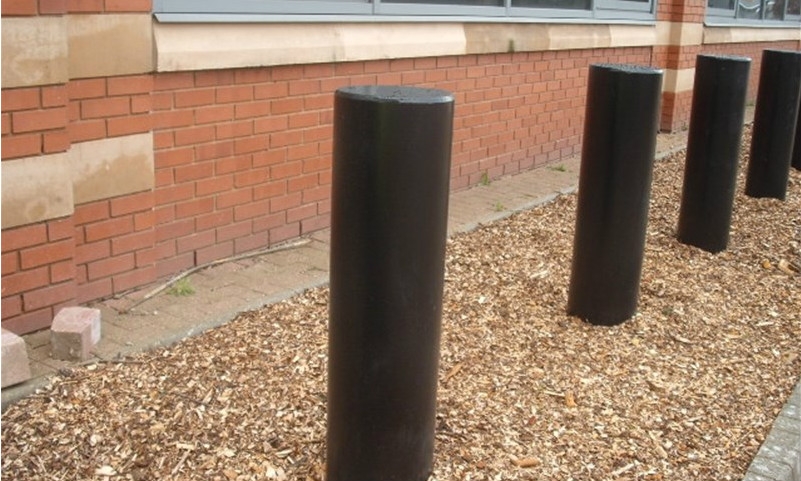Over the last few years we’ve seen a worrying rise in the use of vehicles as weapons, from crime and vandalism to the tragic terrorist attacks in Europe and elsewhere. When protecting a high-value or higher risk premises you now need to consider that they may be subject to a vehicular attack, and should plan, prepare and appropriate accordingly.
For any service providers, organisation or individual who wants to mitigate against hostile vehicle attack, there are several key considerations you need to think about before making a decision. The approach to the site is the first, yet often overlooked, obstacle to the attacker. A long straight road will allow a vehicle to reach higher speeds, resulting in increased impact should the vehicle reach its target. Slow down approaching traffic through creating bends in the road layout by installing speed reducing measures, such as strategically placed bollards, high kerbs and speed humps.
Should the attacker’s vehicle make it to an entry point on site, Hostile Vehicle Mitigation (HVM) products are still necessary above and beyond the use of speed reducing methods. Heavy vehicles travelling at low to medium speeds can cause serious damage to people and property.
Bollards are a good place to start your HVM planning as not all bollards are created equal. There are bollards that will stop a HGV at 50mph which will been tested and certified to PAS 68 standards. As well as offering protection, they still allow pedestrians to move around freely so these bollards will not interfere in everyday activities like the movement of human traffic in a busy area, for example. BSi’s PAS 68 certification identifies the impact test methods, test vehicle type and vehicle performance criteria. It is the UK standard and the security industry’s benchmark for all HVM products.
When dealing with counter-terrorism, it’s important not to create panic, or establish a ‘fortress mentality’. All security measures installed should whenever practical, blend into the background, and not unnecessarily hinder people’s daily lives. As bollards have become commonplace in most built-up areas, they are well suited. Installing them around an area will protect it from harm, without making people aware that there might be a threat. Crash tested security fencing can be disguised as decorative features, while still having the capability to stop an attack. An example of this is Jacksons’ unique Linebacker fencing. It is PAS 68 certified and its steel cables are hidden within a natural timber facade, giving the appearance of a traditional timber fence.
To summarise, the most important things to consider when managing vehicle-borne attack are:
· Approach. Make it difficult for any attacker to reach the area you are trying to protect. Bends in the road and traffic calming are just some of the methods that will slow down the approach speed, and therefore reduce force upon impact.
· Quality. Make sure all your products are of the most appropriate rating to stop vehicles travelling at speed.
· Environment. Unless you want to make an overt security statement, avoid creating a climate of fear. Try to blend any security measures into the background. PAS rated bollards rarely receive a second glance, yet can stop a vehicle. Crash-rated fences can look decorative instead of intimidating, and will still serve their purpose.
An example of a facility that took prudent HVM measures is a Jacksons Fencing’s project at a data centre, featuring products specifically designed to stop a hostile vehicle in its tracks. Due to confidentiality we cannot name the client.
Jacksons installed a number of PAS 68 rated products at the data centre site. A run of PAS 68 Crash Rated Bollards surround the front of the building as well as being located next to a Crash Rated Speed Gate to the rear entrance. These exceptionally strong bollards are able to stop a 7.5 ton lorry travelling at 50mph.
Another important HVM consideration is gates is at the vulnerable entry and exit points. Attackers will sometimes try to force entry into an area by using a vehicle to smash through the main entrance point. Gates are essential for day-to-day operations so still need to allow authorised traffic flow through. However, they need to be able to quickly shut off access in the event of a threat.
Jacksons’ solution was to install a secure airlock by including two Speed Gates, creating a holding area in which only one gate can open at any one time. Jacksons installed a PAS 68 Crash Rated Speed Gate, complemented by a second Bi-Folding Speed Gate. Both gates can operate without the use of a bottom or top track, which eliminates any issues associated with height restrictions and also dispensing with the need for large tracks on the road. Automatic rising bollards were incorporated to establish increased access control and to provide flexible protection against vehicles.



